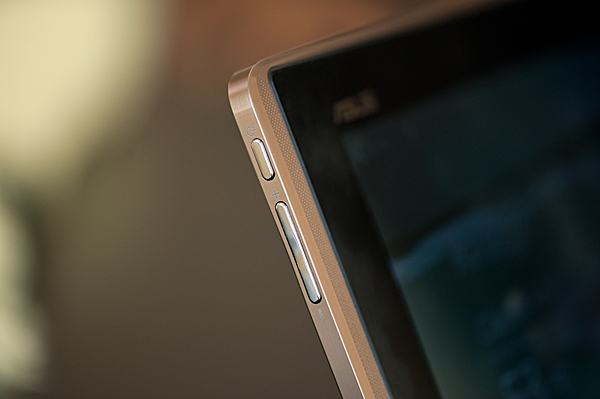ASUS Eee Pad Transformer Review
by Anand Lal Shimpi on April 21, 2011 4:00 AM ESTFinal Words
ASUS delivered three things with the Eee Pad: a very competitive price point ($399), a surprisingly useful (albeit pricey) dock, and a good display. The price point alone is enough to make the Eee Pad the Honeycomb tablet to get assuming you don't need integrated 3G or LTE connectivity. The Eee Pad is comfortable to hold and use and despite the lower price point you don't feel like ASUS has sacrificed much at all to make it. The display has similar characteristics to what Apple ships in the iPad 2. Overall from a hardware standpoint, the Eee Pad is solid.
The Transformer dock is an extremely tempting addition to the Eee Pad, I only wish it were cheaper. When in use the dock extends battery life by 64%, pushing the Eee Pad past 15.5 hours in our general WiFi test. ASUS tells me that the Transformer dock will be compatible with all Transformer branded tablets in the future. I can imagine a thinner Kal-El based version must be in the works at this point.
Tight integration between the keyboard/trackpad and Honeycomb makes the Eee Pad Transformer one part tablet and one part Android netbook, and the whole thing works a lot better than I expected it to. When you need a netbook form factor, you have one, and when you just want to kick back and relax with a tablet you've got that as well. The experience isn't quite fast enough for me to replace my notebook, but I can see where things are headed.
I actually believe the dockable tablet is indicative of where the netbook (and perhaps ultra portable notebook) market is going. Give me some more (or faster) cores and an OS even better suited for notebook duty and the line between a tablet and a netbook becomes quite blurry. I finally understand why NVIDIA opted for four cores in Kal-El and why Microsoft keeps looking to Windows 8 to be its tablet strategy. Windows 8 tablets will be Windows 8 netbooks; they'll just be modular.
The biggest issues here are software related. Honeycomb has matured significantly just with the 3.0.1 update, but there are still dock and camera behavior issues that need to be worked out before ASUS takes the Eee Pad to market. I feel like Honeycomb got a worse rap than it deserves, but there are real issues that need addressing here. I lost a couple of pages of this review thanks to an unexpected hard lock and a reboot while typing this on the Eee Pad. For casual use it's not an issue but the platform isn't mature enough for real work yet.
So why do companies keep introducing tablets with known software issues? I always remember what AMD's Eric Demers once told me: the best way to lose a fight is to not show up.












127 Comments
View All Comments
Shadowmaster625 - Thursday, April 21, 2011 - link
Device synergy is exactly why windows is a must for me. I write all sorts of apps, macros, and scripts that help me get **** done fast and efficient. I can draw a note on my screen, take a screenshot of that note, upload it, get a shortened url for it, and send that url to the computer in my bedroom (and make it automatically open up in its browser) all in a few keystrokes. There aint no way you are ever going to be able to do half of that with an iCRAP or an android. And even if you could, why reinvent the wheel? I did not spend hours writing custom visual C programs and autohotkey scripts just to turn around and be asked to set up all new stuff for some little piece of junk fad. If it cant run my stuff it is useless to me.Shadowmaster625 - Thursday, April 21, 2011 - link
Let's say you have a desktop, a notebook, and a tablet. All have windows and all have a dropbox mapped to drive S: So I create files called "linkshareMain.txt","linkshareTablet.txt", etc. And on each device I have running in the background a program that reads those files parses out urls and opens each url in a new browser tab. So if I want to send this article to my notebook I just click on my desktop shortcut called "linkshare Notebook.txt" and paste http://www.anandtech.com/show/4277/asus-eee-pad-tr... and then save&close. Soon as my notebook is awake it gets that link and opens it and deletes that link from the file.I can also do the same thing using email. I just have a program that parses through all incoming email searching for keywords like: launch_urls_nb625: and then it treats all following lines of text as urls and opens them. Can also launch other programs, load pdf files, play videos, etc. So if I am at work and I want to read this article when I get home I just send myself an email saying launch_urls_main625: http://www.anandtech.com/show/4277/asus-eee-pad-tr... and this article comes up as soon as I wake my computer.
It is fairly easy to set this kind of stuff up, and I will not migrate to a new OS or architecture unless they give me, the end user, this kind of control.
leonzio666 - Friday, April 22, 2011 - link
Hey, could you please specify what program reads and parses the text file in the background? I find this method of yours very interesting and would like to give it a try.seapeople - Sunday, April 24, 2011 - link
Wow, if I want to transfer links between computers I would just bookmark it and Xmarks does the rest. That's like one click.But it's good that you know how to do all that stuff the hard way; we'll need people like you if the internet breaks.
Shadowmaster625 - Monday, April 25, 2011 - link
Yeah well when you deal with a lot of news articles and all sorts of random stuff, bookmarks quickly become impracticle. I have seen many a bookmarks/favorites page that will scroll down for miles and miles. I find that sort of thing unacceptable. I never bookmark a page I will most likely only visit once.jnmfox - Thursday, April 21, 2011 - link
Sounds like a character from Wall-Edaoist - Thursday, April 21, 2011 - link
Anand,Sorry to be pedantic about this, but everyone is really worried.
Can you confirm that the GPS hardware works without wifi connected?
Does the GPS turn on and get a signal even if your wifi is off?
I understand that some apps (e.g. Google Maps) require a Wifi Connection to receive *data*, but does the Transformer require wifi to be connected to receive *GPS* signal?
Could you download a GPS app which doesn't need data (GPS Status works) and confirm it works? https://market.android.com/details?id=com.eclipsim...
Thanks for the in-depth review and for putting up with the GPS nonsense :)
daoist - Thursday, April 21, 2011 - link
That is, use GPS status with the Wifi Off, I meant. :)lobo4123 - Thursday, April 21, 2011 - link
I'd like to see IR transmitters integrated into tablets and cellphones. They may be archaic, but it would be nice to be able to use an android device as a universal remote.flashbacck - Thursday, April 21, 2011 - link
Are the performance issues in honeycomb something that needs to be fixed with quad core processors? I feel like that's throwing raw horsepower at a problem that should be fixed with better programming.